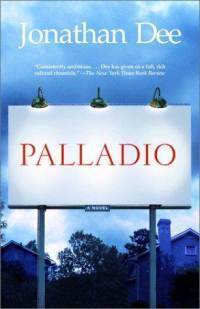Mark Stevens's Blog, page 55
September 17, 2011
Ethan Canin
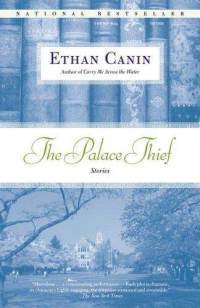 You're a writer. You've got a story to tell.
You're a writer. You've got a story to tell.
What details do you choose to cram into the prose?
"You can describe anything—the sunset, the clouds, the trees, the leaves on the trees, the way the leaves are swaying. But how do you know what to describe?"
This is Ethan Canin—in The Atlantic—talking about mistakes he sees in young writers.
"When do you stop describing?" he asks. "If you're describing a character's clothes, do you stop at the shirt and pants? The watch? The headband? And the answer to all those questions—the single fundament of knowledge from which all other directives flow—is that if you deeply imagine yourself as your character, you will describe what the character would notice. It's very easy, and it's not conscious. If you're a bank robber walking into a coffee house, for instance, you'll notice different things from those a woman about to give birth will notice. The bank robber might notice the back door and the cops. The pregnant woman might look for a phone, a couch, and boiling water."
It's attention to detail—the right details.
Take "The Palace Thief."
I have rarely felt that I was being pulled, inexorably and respectfully, into a story. It's magic when it happens and Canin manages the feat in all four stories here. They are each memorable in their own way. The reading experience is exquisite. Canin's stories are so bold and so clear that you have the feeling that you are being told just the right details and key moments in a life.
No strokes are wasted. In each of these stories, there is that "gulp" moment. In "Accountant," I suppose I should have seen it coming. The opening line is killer: "I am an accountant, that calling of exactitude and scruple, and my crime was small."
The way Canin works with time in "Accountant" is brilliant, showing us how childhood buddies drift apart and then come back together with powerful consequences. When the "gulp" moment comes, Canin draws it out with delicious power and we squirm and fidget and sweat. In "Batorsag and Szerelem," I found Canin's dialogue and rhythms perfect, especially using the made-up language and words among young teenagers who live very much in their own world of secrets and knowledge. "The City of Broken Hearts" got to me in part because I've lived in Boston and I'm a Red Sox fan and this story starts with a reference to Carl Yazstremski, who "was still making his name in the majors, a bird-legged lefty with a funny swing." The father-son strains here are captured perfectly–and then twisted around.
As he does in "Batorsag…" Canin also plays with changing generations, new lifestyles, new ways of thinking about sexuality and relationships. The way Canin paces the revelations in "The City of Broken Hearts" are brilliant. And, finally, "The Palace Thief." Again, Canin arcs a story over decades but doesn't waste our time. I love a good story set in the stuffy, arrogant halls of academe and this is as good as it gets. It's a bit preposterous but deliciously enjoyable, too. The narrator believes "this is a story without surprises." Hardly. "The Palace Thief" is a wonderful tale about conviction, standards, privilege, morals and politics. The situations are terrific but I'd recommend Canin for his style as much as anything else–a great combination of casual story-telling and forceful, highly-charged moments that become key emblems of these lives.
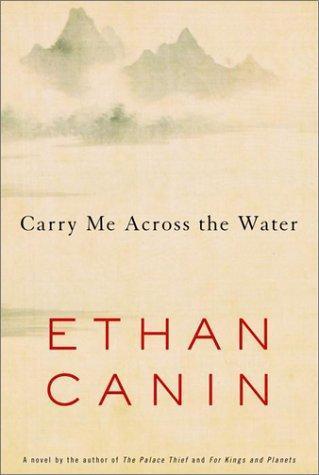 Like drinking cream straight from the carton, reading Ethan Canin forces you to slow down. You can't swallow quickly. You don't want to. You appreciate the way words coat your brain, the way images want to linger. It's not as if every sentence is doing back-flips and waving a big flag saying "look at me, look at me." There's plenty of good, plain-vanilla prose as well but Canin peppers his stories with the kinds of details that give his stories punch and life. In "Carry Me Across the Water," the story careens casually around the life of one August Kleinman, who has experienced a big chunk of the 20th century. I loved the long look-back arc to this story, all told in a fairly compact (200 page) manner.
Like drinking cream straight from the carton, reading Ethan Canin forces you to slow down. You can't swallow quickly. You don't want to. You appreciate the way words coat your brain, the way images want to linger. It's not as if every sentence is doing back-flips and waving a big flag saying "look at me, look at me." There's plenty of good, plain-vanilla prose as well but Canin peppers his stories with the kinds of details that give his stories punch and life. In "Carry Me Across the Water," the story careens casually around the life of one August Kleinman, who has experienced a big chunk of the 20th century. I loved the long look-back arc to this story, all told in a fairly compact (200 page) manner.
"Carry Me Across the Water" is reflective but not inactive. The end comes with a taut war scene, enemy vs. enemy. Blood and guts. Knife to the heart. Kleinman is taking it all in, making sense of what he's done and where he's been. He's evaluating the "fruit and dirt" of his life. "He had killed one man and possibly a second, told Lyndon Johnson he was a coward after paying two hundred thousand dollars to meet him, grown rich in a business that was abidingly anti-Semitic, beaten all the odds, and then lost the great love of his life before returning, if not to his former self, then at least to a man who could pass as that."
The book flows effortlessly, using telescopes and microscopes to examine Kleinman's life and make sense of it all. Memorable and, in its own calm way, oddly riveting.
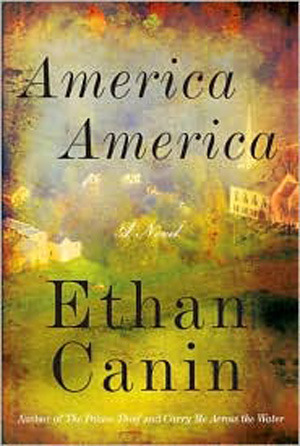 As much as I liked "The Palace Thief" and "Carry Me Across the Water," and its riveting morality tales, "America, America" left me indifferent. The writing alone might be worth it, however. Sentence by sentence, the prose is flowing and enticing. I listened on audio CD and Robertson Dean's narration was brilliant and engaging throughout.
As much as I liked "The Palace Thief" and "Carry Me Across the Water," and its riveting morality tales, "America, America" left me indifferent. The writing alone might be worth it, however. Sentence by sentence, the prose is flowing and enticing. I listened on audio CD and Robertson Dean's narration was brilliant and engaging throughout.
The setup? Politics. Big sweeping American politics. Big powerful families. And secrets, misdeeds and gaps of influence, gaps of wealth, gaps of moral values. The opening? How could you not read more:
"When you've been involved in something like this, no matter how long ago it happened, no matter how long it's been absent from the news, you're fate, nonetheless, to always search it out. To be on alert for it, somehow, every day of your life. For the small item at the back of the newspaper. For the stranger at the cocktail party or the unfamiliar letter in the mailbox. For the reckoning pause on the other end of the phone line. For the dreadful appearance of something that, in all likelihood, is never going to return."
As someone who first really focused on a U.S. Presidential campaign in 1972, it was a treat to see how Canin inserted a fictional character into the real events from that era—beautifully done. As a former reporter, I also enjoyed Canin's lens on journalism as his main character becomes a newspaper publisher and watches a young reporter, Trieste, and marvels about how the journalistic approach has changed. But, overall, the tone is too laid back in "America, America." The energy sags. I wanted Corey Sifter, the book's narrator, to stop reflecting on events and jump in the middle of the action, to step into the flying jump ropes and start dancing. It doesn't happen. This is a read for a comfy chair and a pot of coffee, if you're up for it. It's languorous and beautiful, but needs a jolt. It is, however, eminently readable (and enjoyable). It's all in the character-based details.
Filed under: Books








August 21, 2011
Curtis Sittenfeld
That's what I thought about the entire time I was reading "American Wife." It took enormous guts to write this book, to dive into the psyche of Laura Bush and write from the first-person (for 555 pages).
And to write and imagine with such utter, unflagging discipline. The pace is relaxed, reflective. The phrase "page turner" does not come to mind and that's a good thing as long as you don't mind sinking into the psyche of Alice Lindgren/Laura Bush and watching a woman come to grips with her politics, marriage and, ultimately, her power.
I am not the target audience for "American Wife." (I don't think.) I'm a guy in my late 50's and I can say up until reading this book I had no real interest in learning anything more about Laura Bush. And, yes, "American Wife" isn't directly Laura Bush and, yet, of course it is. Key character points, key plot points about Laura's views on abortion and the war in Iraq and, of course, the tragic auto accident as a youth that colored, changed, modified her entire life. Or did it…confirm her point of view about the world? It stays with her; how could it not? At least, from Curtis Sittenfeld's imagination the accident affected everything that followed. My hat is off to Sittenfeld for imagining—and imagining so deeply—this woman's complexities.
Writing in first-person, Sittenfeld starts with young Alice Lindgren and develops her over the course of four main chapters in her life. I don't know blow-by-blow how the details of Alice Lindgren's life match up with Laura Bush but I think the key issue Sittenfeld is addressing is this:
How does an "American Wife" decide when and how to speak up, when and how to declare independence (in the case of Laura/Alice, it's not much) and when and how to stand your ground? And, I wonder, does Sittenfeld consider "wife" a pejorative? Especially when coupled with "American?" In showing how hard it is for one woman to speak up, to assert herself, is she saying more women should?
What's seductive about Sittenfeld's tale is the voice she has given Laura/Alice—and how much is going on beyond her staid and Plain-Jane exterior. (Didn't think I would encounter so many R-rated passages, for instance.) Laura/Alice is deliberate, thoughtful and only somewhat self-aware. She is dressed down, late in the book, by someone nearly twice her age. She gives in too much, stays too quiet and yet she is also somehow true to herself. At her core, she's a librarian and all the stereotypes (not necessarily accurate ones) are at the forefront to her personality: meek, laid-back, quiet. At-your-service.
So when she gets sucked up into the world of the White House, she is still suppressing her personal attitudes. And then, just by an inch, she shifts and Sittenfeld captures that moment of self-recognition and awareness. Yes, it's taken forever. Yes, you may have screamed at Laura/Alice long ago for her snail's pace adjustments, but to me it's Sittenfeld's dedication to the character that is the marvel. If you're angry, it's because Sittenfeld has been successful at capturing her upbringing and the life-defining moments that shaped her character.
Of course Sittenfeld must also deliver a worthy husband for Laura/Alice and Charlie Blackwell is a sharply drawn fictional George Bush—full of himself, brash, confident, self-assured and extremely well motivated. And yet, Sittenfeld also gives us reason to see what kept them together as a couple and how Laura/Alice did her part to keep Charlie from his own bad habits, especially drinking.
I wanted Laura/Alice to be more forthright, more assertive. Who wouldn't? But, in the end, she does things her own way and in her own style and that's also what I admired about Sittenfeld's talents, to stay so true to the character. "American Wife" is a piece of work—and considerable imagination.
Filed under: Books








July 29, 2011
Jonathan Dee
"The Priveleges," too.
Stylistically, there are contrasts. The first is a huffing freight grinding up a stiff grade. The second is Train à Grande Vitesse at cruising speed, whole towns passed in a blink.
Yet both are heavy, insightful. As the New York Times succinctly put it: "Jonathan Dee … is the kind of writer who thinks hard about contemporary realities and then builds 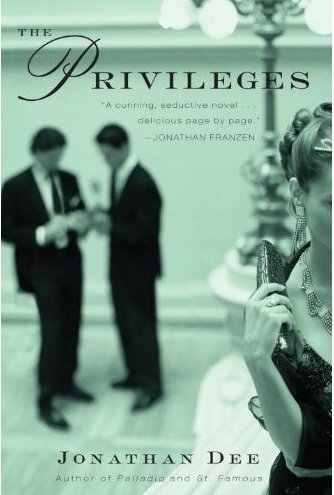 sturdy, stately novels of ideas around them."
sturdy, stately novels of ideas around them."
Dee told The Wall Street Journal that he wrote "The Priveleges" in order to write about a marriage "where two people are so perfect for each other that it becomes problematic for the rest of society."
Okay, we got the New York Times and Wall Street Journal so far, what's with all the quotes? Well, it's because I can't…quite…put my finger…on…why I like Dee's stuff. He does lots of "tell," for instance, that I don't generally like. But Dee sucks me in. "Palladio" teemed with ideas and friction. It grew improbable and fat and deliciously, tantalizingly over the top. (Jean-Claude. The fire. The Culture Trust boys.) "Palladio" plays with rich themes about art and advertising and media and the message. It revolves heavily around a self-centered but enticing and terribly real female, Molly, who drives men crazy. Molly kept me reading, that's for sure. She is both media and message.
But, please, one more quote. This is the one that made me realize why I like Dee's touch. This is from The Millions (http://bit.ly/8Xr3X1). Dee is talking about "The Privileges." We'll pick him up mid-stride:
"…to make the story of Adam and Cynthia into that kind of morality play where people would be satisfied by seeing them brought low–I just feel like I can be as judgmental as anyone else in real life, but the idea of inventing fictional figures in order to then demonstrate my own superiority to them and to share that sense of superiority with the reader, and to take pleasure in watching them be punished for their arrogance, for their greed, for their fill in the blank, it just seems like a really empty exercise."
And Dee's novels (only read these two) are anything but empty. They start with character and build out from there. And Dee stays out of the way, high up and hovering innocently above. Yeah, earlier in the interview, Dee concurs that he's a fan of Milan Kundera's admonition that "it's the writer's job to frustrate or subvert any reader's natural inclination to judge."
Okay, a few of my own thoughts.
I wish "Palladio" were a bit more compact (okay, shorter) and the end kind of drifted off for me, but the core elements are fascinating, particularly the inscrutable Malcolm Osbourne and his edgy ideas. This novel carries a bundle of treasurers. The relationships are taut and vivid. Dee is a big story-teller. He shoots high. He has a feel for big, sweeping moments and "Palladio" has its share of well-pitched drama. Dee's writing can feel dispassionate at times. Maybe he's hovering too high. (I liked the switch to first-person at the end of this one and don't usually care for such changes.)
"Palladio" is about the messages being sent everyday by individuals, corporations and advertisers. It will make you stop and think about the messages you receive every day—which ones you tune out and which ones you agree to contemplate. "Palladio" is about posing and salesmanship and it's about where art and commerce collide.
Maybe it collides, to borrow a phrase from David Byrne, on a woman's hips.
"The Priveleges" is a rich read. It's thoughtful and smart but not showy. Dee's voice is wry and keenly observant. The writing is full of fresh imagery but it just feels natural and within context.
"The Priveleges" is light on its feet and keeps sprinting, no look backs over the shoulder. There's a substantial arc covered in the novel as a young couple marries, has two children, moves on toward middle age, acquires terrific wealth and watches as the offspring grow up. The story shifts to the lives of the children more than I had expected, but, as it turns out that is precisely Dee's issue–what kinds of values and morals the rich today are passing down to the next generation.
The parents, Cynthia and Adam, live in a land of fancy drinks and limited concerns, like whether they can justify jetting off to Anguilla for a brief trip alone. Adam muses that "he had an image of the life he was going to make for all of them and it wasn't coming fast enough and so head done what he'd had to do to speed things up, to get them all intact to that place of limitlessness that she so deserved and that he had always had faith they would occupy. It wasn't about being rich per se. It was about living a big life, a life that was larger than life. Money was just the instrument."
Not surprisingly, it's not a pretty picture between these two and true satisfaction is elusive, although they remain dedicated to each other through many rough patches, all briskly told. Dee avoids melodrama by keeping events moving, and they do. When the story turns more heavily to the children, Jonas' pursuit of offbeat art leaves in a dicey situation and he emerges with some new perspective on wealth and his own identity that is powerful. The final long paragraph is a thing of beauty and makes "The Priveleges" a stirring, memorable book.
Jonathan Dee lost out to Jennifer Egan for The Pulitzer. He was up for "The Priveleges." Doesn't matter much, but I would have voted for Dee. That's okay. I'm not here to judge. And even thinking about it is just an empty exercise.
Filed under: Books








July 17, 2011
Margaret Regan
Almost 2,000 migrant bodies have been found in southern Arizona in the last 10 years.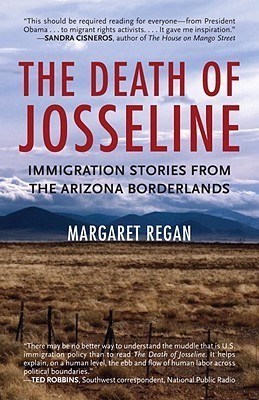
2,000.
Margaret Regan, in an interview with the Austin (Texas) Examiner, said she felt a "moral obligation" to bring the story to light.
Regan: "When I first went down to Douglas, Arizona, in 2000 to report on the crisis, I had just researched and written a lengthy piece on the tragic lives of my Irish immigrant great-grandparents, who died young and poor in Philadelphia in the 1880s, after watching two of the children die. When I saw what was happening to the Latino migrants in Arizona in 2000, I thought: the details might be different, but this story is the same as my great-grandparents' story in all the ways that matter."
The result is "The Death of Josseline" (Beacon Press).
The book wears its heart proudly. Maybe not on its sleeve, but close. Her point of view is clear. There is empathy. (You are hereby warned. You will meet real people.) But "The Death of Josseline" is also a fine piece of reporting about a humanitarian crisis in the nation's backyard.
This would make a fine bookend to Ted Conover's brilliant "Coyotes," first published in 1987 and still going strong. Like Conover, Regan puts faces and names to the ongoing dramas inside the border-crossing zone, primarily the Arizona border around Tucson. It's clear where Regan's sympathies lie, with the "wretched of the earth" being "criminalized for their poverty."
But it's also a mosaic of the faces on both sides, literally (the border) and figuratively (the issue). Regan takes an unflinching look at the "mafia" that exploits migrants on the Mexican side of the border. She camps out with the "No More Deaths" group determined to prevent unnecessary deaths. She rides along and shows us border agents, who also work in the rugged, extreme conditions and who are shown, quite simply, just doing their job. There are a wide variety of people who are key players in this ongoing drama and Regan writes thoughtful portraits of them all. If you want to see how complicated it can get, her chapter on Panda Express says it all.
This is a human drama, Regan is saying, not something political or theoretical in the halls of Congress. Regan has a beautiful writing style and a keen eye for details. "On our hike, the farther into the wilderness we went, the more evidence we found of recent human travelers. A Santa Nino de Atocha water bottle—a popular migrant item, bearing the image of the boy Jesus as a pilgrim, dressed for travel in hat and cloak—was fresh and pliable. On a hilltop we discovered an active windmill, watched over by a herd of placid white cows, where migrants could easily pump out fresh water if they could get to the top."
The book spends lots of its time on the ground, at sand level. "The Death of Josseline" is part desert field guide, too. Regan injects herself gently into the story for a bit of first-person journalism. For the most part, she trains her writing on but she up here and there:
"If a dedicated search-and-rescue team can get so turned around, it's easy to see how migrants unfamiliar with the territory—and not in the agents' prime physical condition—run into trouble. I had trouble myself. Circling up and down hills under the blazing sun, I got winded and flushed and had to stop and rest periodically in the sparse shade."
Due to changing economic conditions in the United States and Mexico—changes that are reducing the relative flood of immigrants to a trickle—the crisis along the border may be abating. (I'm writing in the summer of 2011.) One can only assume many immigrants are still making the run and one can only assume that many are running into life-threatening, and no doubt tragic, situations
Read "The Death of Josseline" for a desert-level view of this major policy issue. It's hard to believe we can't do better on behalf of the human lives on our soil. If that was Regan's main goal, she succeeded.
Regan again (Austin Examiner): "As a friend said, if every year Tucson had a plane crash that killed 200 people, the rest of America would sit up and pay attention and take measures to stop the slaughter. I would hope they would do the same when they learn of the state's annual harvest of migrant deaths."
Filed under: Books








July 7, 2011
David Roberts
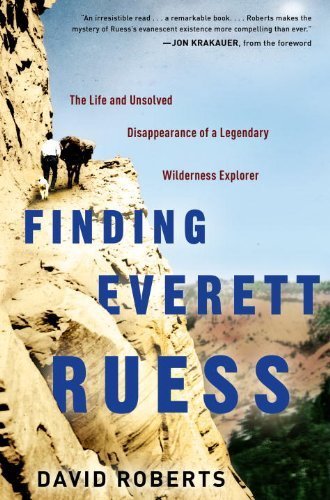 In the middle of Dave Alvin's brilliant album "Ashgrove" (love that snappy title cut) there's a haunting song and killer sit-around-the-campfire kind of melody on a track called "Everett Ruess." I've been digging it for years, never had a clue that is about a real character. In Jon Krakauer's "Into the Wild," there's a whole section about Everett Ruess but I certainly didn't put two and two together. Wish I had, know I didn't.
In the middle of Dave Alvin's brilliant album "Ashgrove" (love that snappy title cut) there's a haunting song and killer sit-around-the-campfire kind of melody on a track called "Everett Ruess." I've been digging it for years, never had a clue that is about a real character. In Jon Krakauer's "Into the Wild," there's a whole section about Everett Ruess but I certainly didn't put two and two together. Wish I had, know I didn't.
So along comes David Roberts' "Finding Everett Ruess" and on page 287 he mentions Alvin's song and quotes the key lyric:
You give your dreams away as you get older
Oh, but I never gave up mine
And they'll never find my body boys,
Or understand my mind.
Ruess, it turns out, disappeared in 1934 at the age of 20. He was on one of his many solo treks around the rugged country in the Four Corners area. He was, as Krakauer points out in the foreward to Roberts' book, Ruess was an idealist and a romantic. Sixty years prior to Christopher McCandless' trip "Into the Wild," Ruess plunged off by himself into the desert wilderness. McCandless' body was found; not so for Ruess.
In Roberts' terrific book, it's hard to warm up to the self-indulgent Ruess, but there's no denying he was an individual who followed his heart. It's hard to watch him take advantage of his parents to pursue his wanderlust (even that term seems to mild) but he's a unique spirit and reading about his treks—and thinking about how he put his wanderings together—is compelling.
If you know the country in the Four Corners area, the hikes and months-long travels around the inhospitable landscape are even more incredible. The conditions must have been brutal. Have you been to Lake Powell? Ruess' last known camp site was up Davis Gulch, which shoots off to the west from The Escalante canyon. Now, it's filled with water and motorboats and houseboats and jet skis, but one can only imagine the extreme conditions back in these canyons prior to the addition of Glen Canyon dam. These were badland. (Read "Desert Solitaire" by Edward Abbey, among many others, for an idea of what this area was once like.)
Roberts' portrait of Ruess is neutral, clear-eyed. He works to separate myth from reality. Ruess is a warts-and-all character, "almost arrogant." His letters requesting items from his parents "smacks of entitlement." He is vagabond but if he's a paragon of solo adventuring, one hopes he is not a role model for how to treat friends or casual acquaintances or family, for that matter. As Roberts acknowledges, he is a "complicated and articulate young adventurer" and it's easy to see why Ruess and his fate developed a cult following.
Of course, a mysterious death always helps and it's the last sections of this book, as Roberts becomes directly involved in the search of his remains that the mystery elements of this account really take off. Roberts is equally upfront about his role in the zealous drive to find the spot where Ruess perished and help tell the story about how he died. Hats off to Roberts for looking hard in the mirror on this one.
I you enjoyed "Into the Wild," you will likely enjoy this, too. Christopher McCandless and Everett Ruess were joined at the spiritual hip. There are certain people who are just born to live outdoors and who are completely fearless in the effort to place themselves, completely alone, in nature. For me, that was the real pleasure of reading "Finding Everett Ruess," to think about what propels explorers of any age to venture off on their own and try to capture the experience in words or art.
The Dave Alvin song:

Filed under: Books








June 5, 2011
Stephen Singular II
The cover has it down. A torn flag, fraying badly. It's also easy to see the 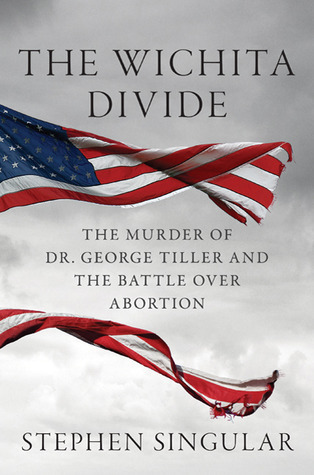 chomping jaw, right? Just need the teeth. I imagine a dinosaur head, the blue field of stars as the eye. And it's all set against the puffy clouds, as if everything's okay.
chomping jaw, right? Just need the teeth. I imagine a dinosaur head, the blue field of stars as the eye. And it's all set against the puffy clouds, as if everything's okay.
That's about the state of discourse in the United States today, every shrill shout amped to max. To eleven. And often mean. Or mean-spirited. Our dialogue—and that's a polite way of putting it—is for entertainment, not enlightenment. With the splintered media, it's a snap to sit in your own echo chamber and "listen" to the news. But you're only listening to one side, reinforcing your views.
Stephen Singular: "The first American Civil War lasted about four years before the North won its victory in 1865 and began the path toward ending slavery. This second one has gone on for about forty years now, with no end in sight. The new millennium, which many had felt would usher in a time of healing and unity, has seen this war spread and intensity; some called it a fight for the soul of a nation."
In gripping fashion, "The Wichita Divide" puts the murder of Dr. George Tiller into this much larger and much more worrisome context. The murder itself was outrageous enough—the cold-blooded shot to the head that killed Dr. Tiller in the sanctuary of his church by a man, Scott Roeder, whose fanatical anti-abortion zeal was so over-the-top that he actually believed he was justified in taking the life of another human being.
Singular simultaneously digs into the years leading up to murder but he also steps back and looks at how the murder isn't an isolated incident, but very much one outrageous act in a a larger trend of confrontations that are ripping the fabric of our society. Like many others who take outrageous steps in an attempt to prove their points and draw attention to themselves, Roeder was a loser (and clearly a coward) who needed better mental health treatment.
The themes running through "The Wichita Divide" are powerful.
The increasingly powerful media bullies (not really news media at all).
The connection between what happened in Wichita and the "new civil war" across America.
The tangled political and romantic world at the ground level that played a key role in allowing hate to fester—or even encouraging it for a political agenda. (For those of us who didn't follow the Wichita anti-abortion demonstrations on a regular basis, the sex scandal surrounding attorney general Paul Morrison's is one of those sections in the book that make you realize how personal agendas play such an enormous role in how events play out. The law is the law, sure, but what agenda do "we" want to promote?
And finally, family—and family values. There are families at the heart of all these individuals, including the family of workers around the clinic and Tiller's church, too. Roeder's attempt to head a family is the ultimate irony—he showed no ability to raise the one life he was really responsible for bringing into the world. By contrast, Tiller treated strangers (patients) like family. This clinic was no production line; it was as much counseling center as medical service. The opening sections that walk us through these two deeply contrasting lives—and upbringings—are fascinating.
In Singular's hands, all the major characters are vividly drawn. The years of protest and activity over Dr. Tiller's clinic are peeled back and explored. Of course we'll never know, but reading "The Wichita Divide" makes you wonder if Roeder would have felt bold enough to pull the trigger if there hadn't been more of an effort to aggressively pursue the protesters who threatened the clinic. The protesters were generally so emboldened that Tiller needed a bulletproof vest and a specially outfitted car in order to feel secure.
Whether you are "pro-choice" or opposed to abortions, Singular's big-picture look at this issue has more to do with finding the common threads of terrorism right in our own main streets, town centers and back yards.
Ultimately, this book is about power. I'd encourage readers to note the role that the men play in this book.
Singular notes from Tiller's funeral service: "The succinct floral arrangement beside Tiller's casket resonated beyond any of the songs or speeches. The phrase 'Trust Women' was deceptively simple and went to the heart of the war over abortion—the two words implying that it wasn't for government, religion, men, or other social institutions to decide what was right for the individual female when confronting one of life's most wrenching moments. Women were ultimately responsible for dealing with the consequences, good and bad, of their choices, and real freedom, real equality, and real responsibility included the right to make a wrong or harmful decision."
For a compelling read about today's battle over values, look no further than "The Wichita Divide." It's about Wichita, yes, and all the rest of us, too. (Kudos to Pete Garceau and Jason Ramirez for the cover; that's the whole thing in a powerful image.)
Filed under: Books








May 30, 2011
Laura Hillenbrand
Here's a perfect book for Memorial Day—war through the eyes of Louis Zamperini and what he endured.
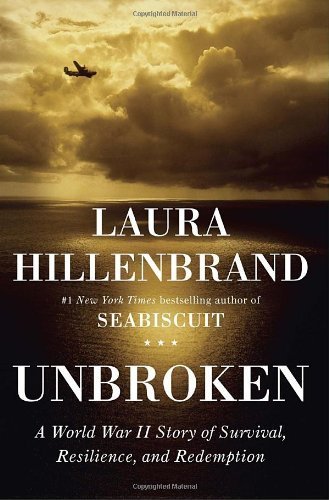 "Unbroken" is gripping, powerful and unforgettable.
"Unbroken" is gripping, powerful and unforgettable.
I was left with the question: what kind of misery is a man willing to inflict on another?
Yes, there's The Bird (who tormented and brutalized Zamperini's relentlessly as a prisoner of war) but there's also The Bomb. I'm not exonerating or justifying anyone or any action. Abu Ghraib, for instance, as just one example. Waterboarding, another. No side is guiltless.
If you want a definition of "tough," if you want a portrait of what a "soldier" is capable of enduring, what an individual does on behalf of their country, look no further than Zamperini.
Tough physically, even tougher mentally. The arc of Zamperini's multi-faceted, epic life is, quite frankly, hard to comprehend. Only Sebastian Junger's "War" gave me that same sensation of the human being's eye-level view of war. "War" made battle visceral. You internalized it. You felt what it was like to be ground down into a determined fighting machine. "Unbroken" does the same thing but it travels farther, has more sweep. (It's no wonder there's a movie in the works.) Zamperini is confronted with so many varied situations that force him to rely on his mind to survive.
Five weeks into their long drift on a raft that saved them from the wreckage of their downed bomber in the Pacific Ocean, Louis and his friend Phil (Russell Allen Phillips), find peace. And quiet. Calm heads. The two have overcome so much and managed to find ways to survive, to find nourishment where there is apparently none. "They continued quizzing each other, chasing each other's stories down to the smallest detail, teaching each other melodies and lyrics, and cooking imaginary meals."
Louie, writes Hillenbrand, "found that the raft offered an unlikely intellectual refuge. Here, drifting in almost total silence, with no scents other than the singed odor of the raft, no flavors on his tongue, nothing moving but the slow procession of shark fins, every vista empty save water and sky, his time varied and unbroken, his mind was freed of an encumbrance that civilization had imposed on it. In his head, he could roam anywhere, and he found that his mind was quick and clear, his imagination unfettered and supple. He could stay with a thought for hours, turning it about."
Zamperini, a former U.S. Olympic team track star, has a long journey ahead. Surviving the raft ride is just the beginning. There is torture coming, in the P.O.W. camps. There are scenes in the camp that are, quite simply, impossible to imagine. Hillenbrand calls these trials "incomprehensible degradation and violence." Hard to disagree. And then there's Louie's long struggle to re-enter society once the war comes to a close. In some ways, that's the biggest battle of all—finding himself again.
I'm not giving anything away. There is no spoiler alert needed. We know from the beginning—the title alone telegraphs it—that this story arc involves a triumph of will and off-the charts determination.
After all the physical abuse his body endures, there's one last hill to climb at home for Zamperini—and that's opening his mind up to the possibility that his wife might be right, that the touring preacher (a very young Billy Graham) might hold the key to getting Louie's life back on track. Whether you're religious or not, Louie has endured so much you want to see him open himself up to the outside help. You want him to find peace—and stability. He has managed so much with the power of his mind, he needs Graham to get him over the toughest part, "normal" life at home and overcoming the monsters that chased him down in his nightmares, day and night.
The pleasure (tough word to use) of Unbroken is in the details and Hillenbrand's masterful storytelling voice. Like Seabiscuit, another non-fiction classic, Unbroken is a compelling book. Memorial Day, with its roots from our own post-Civil War era, is about honoring those who died. But it clearly is also about those who fought and survived. It's hard to imagine there are many stories as powerful as Zamperini's.
Filed under: Books








May 22, 2011
Michael Gruber
There's energy on every page.
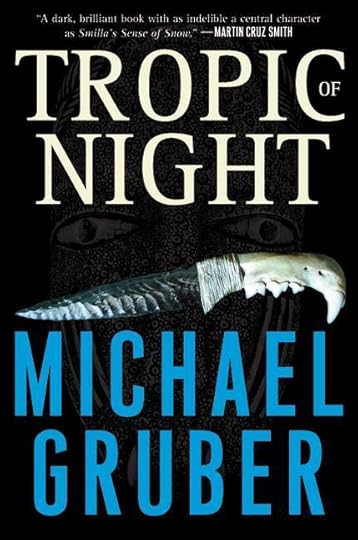 Put a toe in the water of this book and suddenly you are water-skiing (barefoot, of course) at 100 m.p.h. Michael Gruber's style is engaging and sucks you in. You will go for a ride. I was right there. I waded through all the lessons in Santeria and voodoo and magic potions. I enjoyed the trip on this big, pumping happy-with-itself storyline. I'm sure you could have cut 60 or 100 pages but that wouldn't have given "Tropic of Night" its larger-than-life feel. "Tropic of Night" is sprawling and ambitious. Because I like cop stories and mysteries, I easily latched onto Jimmy Paz. He gave me an anchor through the book; I looked forward to seeing him return and enjoyed the banter with his fellow cop, Cletis Barlow, who is prone to cite Bible verse to make his points. Gimmicky? Not in Gruber's hands.
Put a toe in the water of this book and suddenly you are water-skiing (barefoot, of course) at 100 m.p.h. Michael Gruber's style is engaging and sucks you in. You will go for a ride. I was right there. I waded through all the lessons in Santeria and voodoo and magic potions. I enjoyed the trip on this big, pumping happy-with-itself storyline. I'm sure you could have cut 60 or 100 pages but that wouldn't have given "Tropic of Night" its larger-than-life feel. "Tropic of Night" is sprawling and ambitious. Because I like cop stories and mysteries, I easily latched onto Jimmy Paz. He gave me an anchor through the book; I looked forward to seeing him return and enjoyed the banter with his fellow cop, Cletis Barlow, who is prone to cite Bible verse to make his points. Gimmicky? Not in Gruber's hands.
Paz was my through-line on the plot. He's cool. Every good book needs a cool cop. He's "a stocky, muscular man of thirty-two, the color of coco matting, with a smooth round head, on which the hair had been cropped almost to the skin. His ears were small and neat and his eyes, set in lanceolate sockets, were large, intelligent, warm brown in color, but not warm at all." (Lancelote means longer than wide; I had to look it up.)
Paz is a recognizable character but like all of Gruber's characters are big, live large and have pushed the boundaries of normal. For instance, in the case of Paz, his string of lady friends and the intricate schedule he maintains keeping their needs met—or not.
But most of the book is devoted to Jane Doe. Yes, that's the real name of the character. Jane soaks up two-thirds of the book, first through a first person narrative and also through her diaries about various anthropology expeditions to Siberia and Africa and her exposure to, basically, black magic. She's increasingly a black magic woman and we are along as she (and Gruber) explain it all.
I feel as if Gruber must have sprayed something in my eyes to make me view the world differently—because there is far more back story here than I would normally tolerate, let alone enjoy.
I think the key is that Gruber doesn't treat the back story as anything less than integral to the main plot. He pumps up the story of Jane Doe and her journeys—primarily through edgy anthropology (yes, there is such a thing) and African witchcraft—with ample detail. I don't know if Gruber is capable of giving anything short shrift. Be prepared to learn something, unless you are already familiar with this whole realm.
Caution: the ending borders on horror. I don't know where the line is, exactly, but it gets pretty grisly. The ending gave me pause. It got more than a bit dark. I covered my eyes and kept on reading. Even though some of the tough images are embedded in visions and dreams, that doesn't make them any less challenging to digest, does it?
Worth reading? Yes. Put your conventions aside and be prepared. This is a genre-bender, that's for sure. Hard to resist.
(Note—there is a glossary in the back. Wish I had known that when I started. Alujonnu is an evil spirit; ama is head; dulfna is aura of witchcraft, ilegbo is to enter trance and a zandoul is a container for magical objects…you get the idea. There are few dozen terms. Doesn't hurt to bone up.)
Filed under: Books








May 14, 2011
Keigo Higashino
"The Devotion of Suspect X" is confined to a box. The edges and borders are established and then it works its way back over itself, revealing layers. This mystery stays within itself, an admirable trait. 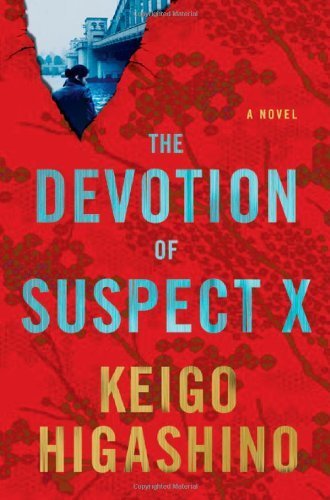 Every scene counts. You might think the opening is nothing but background scenery, a throwaway. You'd be wrong.
Every scene counts. You might think the opening is nothing but background scenery, a throwaway. You'd be wrong.
There are few principal characters (although the book hardly feels under-populated). There's the teacher Ishigami, a "heavy-set man, with a big, round face that made his small eyes look thin as threads." There's Yasuko, who is dealing with an angry ex-husband. (Yes, she "deals" with him.) She's Ishigami's neighbor and, it turns out, Ishigami is fixated on her. The other two main characters are Yukawa and Kusanagi, who like playing chess together in Lab 13 at the Imperial University, in the physics department. Kusanagi is a cop. Yukawa is a college professor.
There's one body.
We know who did it (by page 18).
At its core, "The Devotion of Suspect X" is a battle of wits. If you know mathematical theory, you might have an edge up on enjoying this plot, but I know precious little and still enjoyed it. The story is a match between detectives (those with official badges and those without) and the mastermind of the cover-up.
Very few books peel back the layers of the plot so carefully, so effectively. Very few books take you right down to the last page with plausible twist neatly connected to the next plausible twist. Emphasis on 'plausible.' You realize at the end that Keigo Higashino has adeptly kept a key part of the story from you—and you didn't even notice.
I enjoyed the process of watching the detective and his professor friend break down the alibi, think through the logic of the situation bit by bit by bit. They prove, irrefutably, that a lot of police consists of "barking up the wrong tree." Assumptions, theories, tests.
The approach to solving mathematics proofs comes in handy:
"Therefore, it would seem that analyzing the validity of someone else's solution was simply a matter of following the routes they had taken. In fact, however, it was never that simple. Sometimes, you could follow a mistaken route to a false treasure, and prove that it was false could be even harder than finding the real answer."
More: "All you're doing is tracing the steps of the proof. What you should be doing is looking to see if there aren't any other answers that might fit what you know about this case as well. Only if you can prove that are there are no legitimate answers other than the one he's offered can you say that his is the only solution to the problem."
Agatha Christie, who knew something about setting up the rules of a story (and sticking to them) would have been proud of this plot and the way it's told.
Filed under: Books










